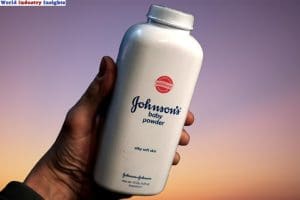Johnson And Johnson talc claims: Johnson & Johnson’s second attempt to settle talc claims in the bankruptcy case has been rejected by the federal court judge.
A judge rejected Johnson & Johnson’s second attempt to settle lawsuits accusing their talc products of causing cancer. The claims state that Johnson & Johnson’s talc products caused cancer. The plaintiffs claim that their cancer was caused by using Johnson & Johnson’s talc baby powder and other talc-containing items. Due to recent events, the corporation, which believed bankruptcy protection would solve the situation, has suffered a setback.
The company transferred liabilities to a new subsidiary called LTL Management before filing for Chapter 11 protection. This happened in 2021 before the company filed for bankruptcy protection. After completing those steps, the corporation promptly applied for protection under this chapter.
Michael Kaplan, the judge in Trenton, NJ, dismissed LTL Management’s second bankruptcy petition as the subsidiary did not face “imminent” or “immediate financial distress.” Their bankruptcy petition was
denied by a US appeals court in April for the same reason as before.
Johnson & Johnson’s $8.9 billion settlement to stop new claims is at risk due to this verdict. The conclusion would end future litigation filing. The corporation says over 60,000 potential claimants are willing to join the settlement. The company claims it has already happened.

Read More: Personal Consumption Spending Price Index Shows Signs of Slowing Inflation
Johnson & Johnson plans to appeal the verdict from LTL Management. Erik Haas, the worldwide VP of litigation, insists the bankruptcy was initiated in good faith and in compliance with the Bankruptcy Code.
They stress that a company doesn’t need to be “in flames” to pursue restructuring approved by most claimants to meet Code requirements. This is a crucial point in their argument. They still insist the
bankruptcy case was initiated according to the Bankruptcy Code.
Johnson & Johnson claims its talc-containing products are safe. The company cites research and evidence to support its views. As a result of the verdict, the ongoing talc lawsuit and future settlement are now in question. This is because the recent verdict was a result of the previous one.
Our Reader’s Queries
What are the lawsuits against Johnson and Johnson talc?
J&J, the biggest producer of healthcare products globally, is facing legal repercussions that go beyond the claims made by individual states. The company is currently dealing with over 50,000 lawsuits that accuse it of hiding the cancer risk associated with asbestos in its talc-based powders, all in an effort to protect one of its most popular products. This legal exposure is a significant challenge for J&J, and it remains to be seen how the company will address these allegations.
Does Johnson & Johnson baby powder still have talc in it?
Johnson and Johnson has made a significant decision to discontinue the production and distribution of talc-containing products in the United States and Canada. This announcement was made on May 12, 2020, indicating that the company no longer uses talcum powder.
Who qualifies for the Johnson & Johnson lawsuit?
Individuals who have been diagnosed with ovarian cancer, mesothelioma, or other health issues due to prolonged use of Johnson’s Baby Powder products may have the opportunity to participate in a talcum powder class action or file a personal lawsuit. This could potentially provide them with the compensation they deserve for the harm caused by the product.
What are the talc claims?
Thousands of individuals have filed lawsuits alleging that Johnson’s Baby Powder, which contains talc, caused their cancer diagnosis. Despite Johnson & Johnson’s proposed $8.9 billion bankruptcy settlement in April 2023, it was ultimately rejected. As of December 2023, over 53,700 cancer lawsuits were still pending in the MDL.

